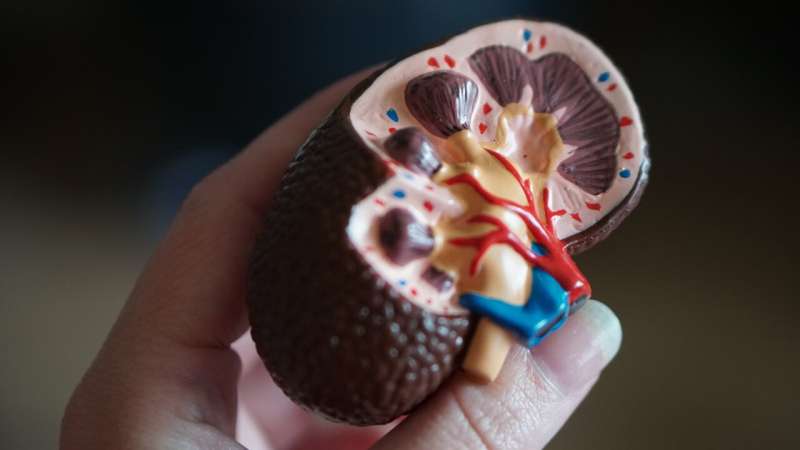This article has been reviewed according to Science X's editorial process and policies. Editors have highlighted the following attributes while ensuring the content's credibility:
fact-checked
trusted source
proofread
New study finds cardiovascular outcomes better for patients on home hemodialysis

Dialysis patients using a more traditional home hemodialysis procedure have lower incidence of cardiovascular disease than patients using a less invasive peritoneal catheter for dialysis at home, according to a study led by a University of Cincinnati College of Medicine researcher.
The study, published in Kidney360, found that patients on home hemodialysis had a 42% lower risk of stroke, 17% lower risk of acute coronary syndrome, 22% lower risk of cardiovascular death and 8% lower risk of death.
Silvi Shah, MD, associate professor in the UC College of Medicine, led the study, which examined the medical outcomes of 68,645 individuals on dialysis recorded in the United States Renal Data System between Jan. 1, 2005, and Dec. 31, 2018.
"Patients often start receiving hemodialysis in a center, and then some are transitioned to home hemodialysis," says Shah, also a nephrologist at UC Health, the university-affiliated health care system. "Patients may also choose peritoneal dialysis, which is another form of the procedure that can be offered at home and is easier to manage."
Globally, more than 2 million people undergo dialysis each year, and about 550,000 undergo the procedure in the United States.
At a dialysis center, medical staff can connect patients to a dialysis machine to filter their blood. A similar procedure can be performed at home, either with the conventional dialysis machine or with a peritoneal catheter, which attaches to the abdomen and connects to an automated dialysis machine that filters the blood as the patient sleeps.
"The choices can affect a patient's lifestyle," explains Shah.
Trips to dialysis centers can be time-consuming, accounting for four to six hours of the day, while home hemodialysis can be costly and requires sufficient training and skill to perform properly. Peritoneal dialysis is easier to administer, can be performed while the patient is sleeping and also gives more flexibility for individuals during the day.
Findings for the study can allow dialysis patients to weigh quality of life, costs and health outcomes when choosing which form of dialysis is best for them in consultation with their physician, says Shah.
Shah tells patients that the choice is theirs. "But we also can tell them that our study showed home hemodialysis is associated with better cardiovascular outcomes," she says.
"We are speculating on the reasons for the better heart health outcomes," says Shah. Home hemodialysis may offer better cardiovascular health outcomes than peritoneal dialysis because it is more intensive.
"I think there may be better fluid management with home hemodialysis. So with more intensive dialysis, there is better solute clearance in blood and better control of bone and mineral metabolism parameters," says Shah. "There is better reduction in ventricular volumes and regression of left ventricular mass, which is thought to help with blood pressure."
Other co-authors of the study include Annette L. Christianson and Anthony C. Leonard, both at the University of Cincinnati College of Medicine; Nupur Gupta, MD, Indiana University School of Medicine; Eric Weinhandl, Ph.D., University of Minnesota College of Pharmacy; and Charuhas V. Thakar, MD, Queen's University, Belfast, UK.
More information: Silvi Shah et al, Cardiovascular Outcomes in Patients on Home Hemodialysis and Peritoneal Dialysis, Kidney360 (2024). DOI: 10.34067/KID.0000000000000360
















